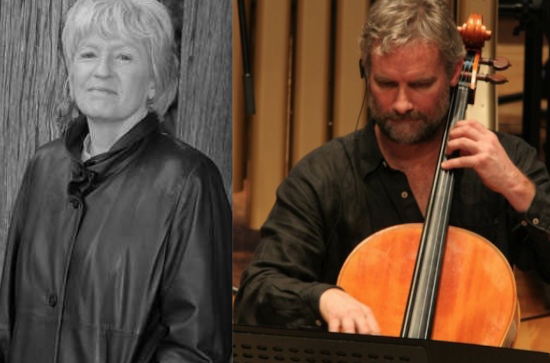
Frank Schaefer lives and works as a cellist in London where he is in constant demand both for live performances and studio recordings.
Ethna Tinney has performed many concertos with the NSOI and RTE Concert Orchestra and played solo and chamber music concerts all over Ireland.
Programme:
Kodály: Sonatina for Cello and Piano
Saint-Saëns:Romanzafrom Cello Sonata in F op. 123
Beethoven: Cello Sonata in A major op. 69
Zóltan Kodály (1882-1967): Sonatina for Cello and Piano
The genesis of this eight-minute work is shrouded in a certain amount of mystery but it seems that Kodály wrote it in 1922 to add to his earlier Cello sonata op. 4 of 1910 but then decided that his composer’s voice had evolved so much in the intervening years that it should stand alone, as it has done ever since. It begins with a big flourish on the piano which sets up in embryonic form many of the motifs that thrust the work forward. Kodály exploits all the resources of both cello and piano, virtuosity, plangent melody, shifting rhythm and above all a sense of yearning which makes this short work a pleasure to perform for both protagonists.
Camille Saint-Saëns (1835-1921): Romanzafrom Cello Sonata in F op. 123
Saint-Saëns was all of seventy years old when he wrote this sonata, his second for the instrument with which he had a lifelong love-affair. Think of The Swanand the Allegro AppassionatoThere are also two fine cello concertos and an early suite for cello and piano. The Romanza, derived from the old French word roman meaning a ballad, is marked Poco Adagio, and is a song without words, the cello pouring out its melodies. The structure is ABACA, with the serene A sections in B flat major while the stormier B and C sections are in B flat minor. It is left to the listener to imagine what the ballad may be about.
The composer had a mantra “Surtout pas d’émotion” which translates cryptically as “Above all, no emotion” and yet he wrote that the Romanza“will make the cellists happy…and bring tears to the eyes of sensitive souls.” In the last years of his life he played the sonata repeatedly with the many cellists who vied to perform it, including his great friend Jules Griset, to whom the work is dedicated.
Ludwig van Beethoven (1770-1827): Cello Sonata in A major op. 69
Beethoven wrote five sonatas for cello and piano, two as his early opus 5, two as his late opus 102, and bang in the middle the A major on its own. All five are wonderful works but the A major is by far the best loved, with its cornucopia of melody, thrilling rhythms and scintillating runs.
The first movement, Allego ma non tanto, begins with a warm, expansive melodic fragment on the solo cello, which is answered by an equally warm fragment on the piano. Then follows a dramatic minor section in triplets, which leads to a serene sequence of exquisite contrapuntal melodies, which in turn gives way to an extended passage of mixed triplets and semiquavers, alternately fortethen piano, now boisterous now tender, which leads us back to the opening melody and a full repeat of the exposition before we embark on the development, which is a section of entirely new ideas, plaintively passionate in a succession of minor keys, which ingeniously fold us back through a sequence of magical ideas to the recapitulation. Not satisfied with all that, Beethoven adds an extended coda of limpid beauty which hints at the sublime works of his last years.
The second movement Scherzo, marked Allegro molto, is in a much lighter vein although it alternates between the minor and major home key. Cello and piano jostle with each other in a succession of quixotic often syncopated ideas at breakneck speed. It is followed by an Adagio Cantabilewhich is so beautiful that we think we are in for an extended slow movement, but Beethoven is so liberal of ideas in this work that he quickly abandons it as it proves to be only a fleeting introduction to the finale, Allegro Vivace, a movement positively fizzing with brilliant runs and arpeggios, and a sheer dancing exuberance which is unmatched in the entire cello repertoire.
